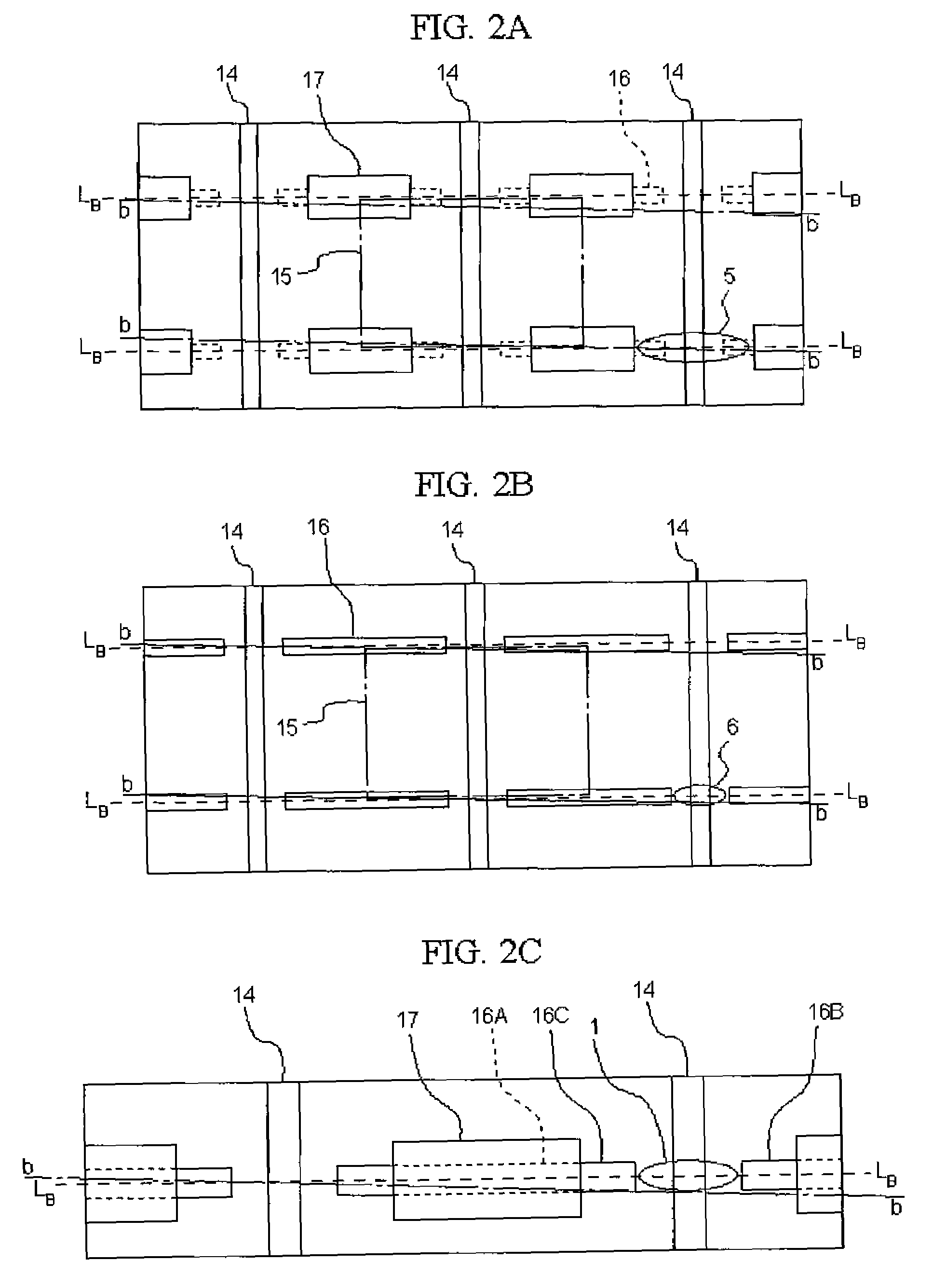Method of manufacturing semiconductor element
a manufacturing method and semiconductor technology, applied in semiconductor lasers, laser details, electrical equipment, etc., can solve the problems of inability to apply a high-precision dividing method, inability to achieve stable products, and inability to achieve high-precision dividing methods, etc., to achieve high accuracy and improve product yield.
- Summary
- Abstract
- Description
- Claims
- Application Information
AI Technical Summary
Benefits of technology
Problems solved by technology
Method used
Image
Examples
example 1
[0116]Example 1 of the present invention illustrates a structure of a laser element and a method of manufacturing the same.
[0117]First, a nitride substrate made of n-type GaN with a thickness of 400 μm is set in a MOVPE reaction vessel, and a nitride semiconductor layer to be described below is stacked to form an element structure. The surface of the substrate is C-plane and the semiconductor crystal to be described below is grown along the c-axis.
[0118]As a first conductive type semiconductor layer 11, a first layer of n-Al0.02Ga0.98N doped with about 1018 / cm3 of Si and a second layer of n-In0.04Ga0.96N doped with about 1018 / cm3 of Si are grown, and thereon, an n-type cladding layer of Al0.11Ga0.89N doped with about 1018 / cm3 of Si, and an n-side optical guide layer of undoped Al0.06Ga0.94N are grown. Next, as an active layer 12, a barrier layer of Al0.15Ga0.85N doped with about 1019 / cm3 of Si, an undoped well layer of In0.01Ga0.99N, and a barrier layer of Al0.15Ga0.85N are grown to...
example 2
[0131]In a similar manner as in Example 1, a wafer having a element structure of a nitride semiconductor layer on a substrate is taken out of a reaction vessel, a mask pattern of a desired shape is disposed on a p-side contact layer, and using the mask pattern, an etching is performed from the p-side contact layer side to a part of an n-side cladding layer to form an auxiliary groove 30. Different from that in Example 1, by forming an exposed region of the n-side cladding layer, as shown in FIG. 3, island-shaped portions 28 and three first auxiliary grooves 30A to 30C which are interposed between the island portions 28 and divided by the exposed region 29B. Here, the exposed region 29B is formed so as to surround the second auxiliary groove 31, and divides the element regions from each other, and divides the second auxiliary groove and the element region 15 from each other. Herein, the width (length in the cleavage direction) of the exposed region 29A is about 30 μm, and in the expo...
example 3
[0139]The element is formed in a similar manner as in Example 1, except that a semiconductor substrate having dislocation-concentrated regions in a stripe-shaped distribution so as to interpose two ridges, and the second auxiliary grooves are provided dividing the region with a wider length (length in dividing direction) with respect to the region.
[0140]As described above, in a case of dividing of a substrate with a region having largely different crystallinity by crossing a plurality of times, an adverse effect caused by dividing across the region can be suppressed by forming a second auxiliary groove cross-linking the element regions at the both sides of the region.
PUM
 Login to View More
Login to View More Abstract
Description
Claims
Application Information
 Login to View More
Login to View More - R&D
- Intellectual Property
- Life Sciences
- Materials
- Tech Scout
- Unparalleled Data Quality
- Higher Quality Content
- 60% Fewer Hallucinations
Browse by: Latest US Patents, China's latest patents, Technical Efficacy Thesaurus, Application Domain, Technology Topic, Popular Technical Reports.
© 2025 PatSnap. All rights reserved.Legal|Privacy policy|Modern Slavery Act Transparency Statement|Sitemap|About US| Contact US: help@patsnap.com



